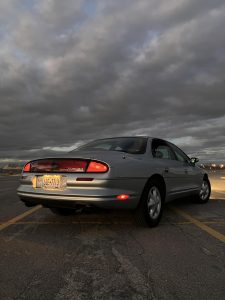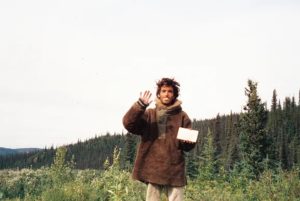Top Five Groundbreaking Films
April 1, 2020
Over the last 100 years, many advances in film have been made. Every so often, a film comes along that changes our perception of what is possible in movies. So from The Wizard of Oz to The Matrix, here are the top five game changing films.
Number 5: Snow White and The Seven Dwarfs (1937)
Released in 1937 by Walt Disney and Walt Disney Studios, Snow White and The Seven Dwarfs is the first feature length film made by Disney, and the first American animated feature film in U.S history. The film took roughly three years to make, and was a large success. There were more than 700 artists behind the film who completed more than 2 million sketches to make the film possible; in the end, the film included more than 250,000 drawings. It was the first movie to put Walt Disney on the map.
Number 4: Chicken Run (2000)
Released in 2000 by Aardman Animations, the studio behind many classics like Wallace and Gromit The Curse of The Were- Rabbit (2005), The Shaun The Sheep Movie (2016), and Early Man (2018), Chicken Run was their first claymation film released, and was very unique for its animation. During film production, 30 sets were used, along with 80 animators working along with 180 people overall. Despite the amount of people that were involved, only one minute of film was completed each week, which means that a lot of work was put into the making of this film. Tragically, in October 2005 the warehouse caught fire and destroyed priceless props, sets, and models of the studio.
Number 3: The Matrix (1999)
If you’re familiar with the slow-mo bullet dodge sequence often seen in movies and shows, well, this is where that awesome idea originated. The Matrix was released in 1999 by Warner Bros. and Roadshow Entertainment. The film includes several medium shots, which allowed audiences to view the background setting as well as the intense combat skills in some scenes of the movie. Also, the 360 degree shot that is seen in this film, is what also made the film unique in its cinematography– no one had ever done it before, and it introduced a very unique way to film action scenes. Additionally, in the scene where Neo and Trinity enter the business building, actors used actual explosives so that it looked more real for the movie goers.
Number 2: Star Wars (1977)
A long time ago (well not that long), in a galaxy far far away… Star Wars was born. The Skywalker Saga was created by the legendary George Lucas of Lucasfilm. Although later movies used CGI effects, the first three films, beginning with New Hope, were created with miniatures and unique camera shots. The scene where the Galactic Empire’s large ship flies overhead was, at the time, a cinematic marvel. This scene was filmed by placing the miniature ship above the camera at an angle which would make the ship appear real size. This same effect was used in “The Empire Strikes Back” when filming on Hoth with the miniature At-At.
Number 1: The Wizard Of Oz (1939)
Follow the Yellow Brick Road and you’ll see Metro-Goldwyn-Mayer change movie history forever with the wonderful cult classic, The Wizard of Oz. Released in 1939 by Metro-Goldwyn-Meyer, this movie wowed audiences and critics alike for its unique cinematography. The most memorable scene is when Dorothy steps out of her house and into Munchkin City where the film turns from black and white to full color. Although this was not the first film to use color, the sequence from black and white to color won over audiences and helped make the movie a large success. The sets in this movie were backdrops and had to be changed for each scene. This movie is still a beloved film and runs on TV each Thanksgiving.
Honorable Mention: The LEGO Movie
Very similar to Chicken Run, this movie also used stop-action sequence. But instead of using clay, they used LEGOs.
Honorable Mention: Jaws
This movie, like Star Wars, was a huge success in the 1970’s. This movie deserves mention because of how it was filmed on such a strict budget. The boat scenes were made to appear in the middle of the ocean, but in reality they were filmed very close to land. Director Stephen Spielberg simply turned the boat around so that the audience could not see land. The shark itself was not created by CGI effects, but an actual animatronic placed into the water.










